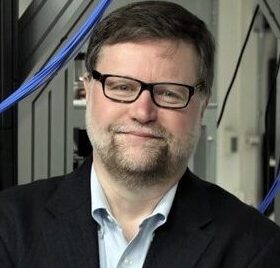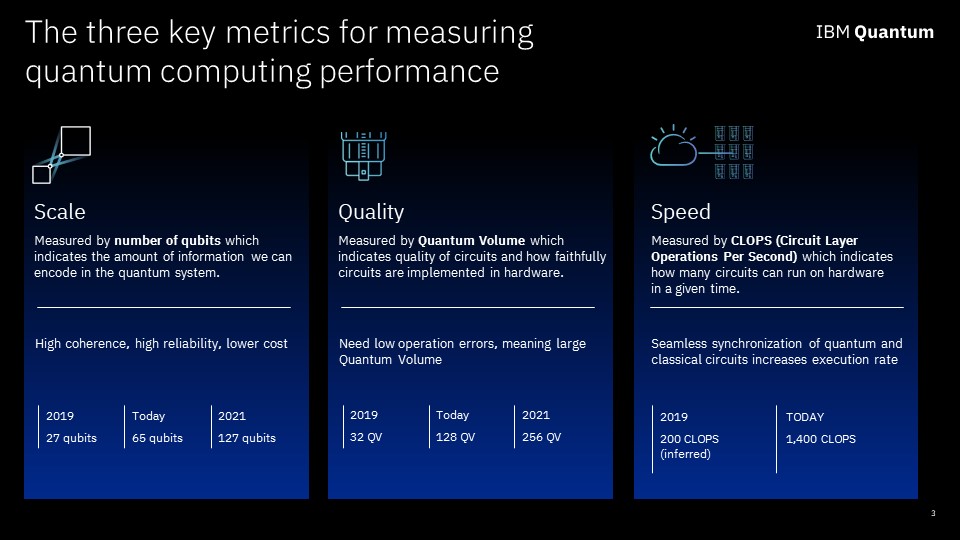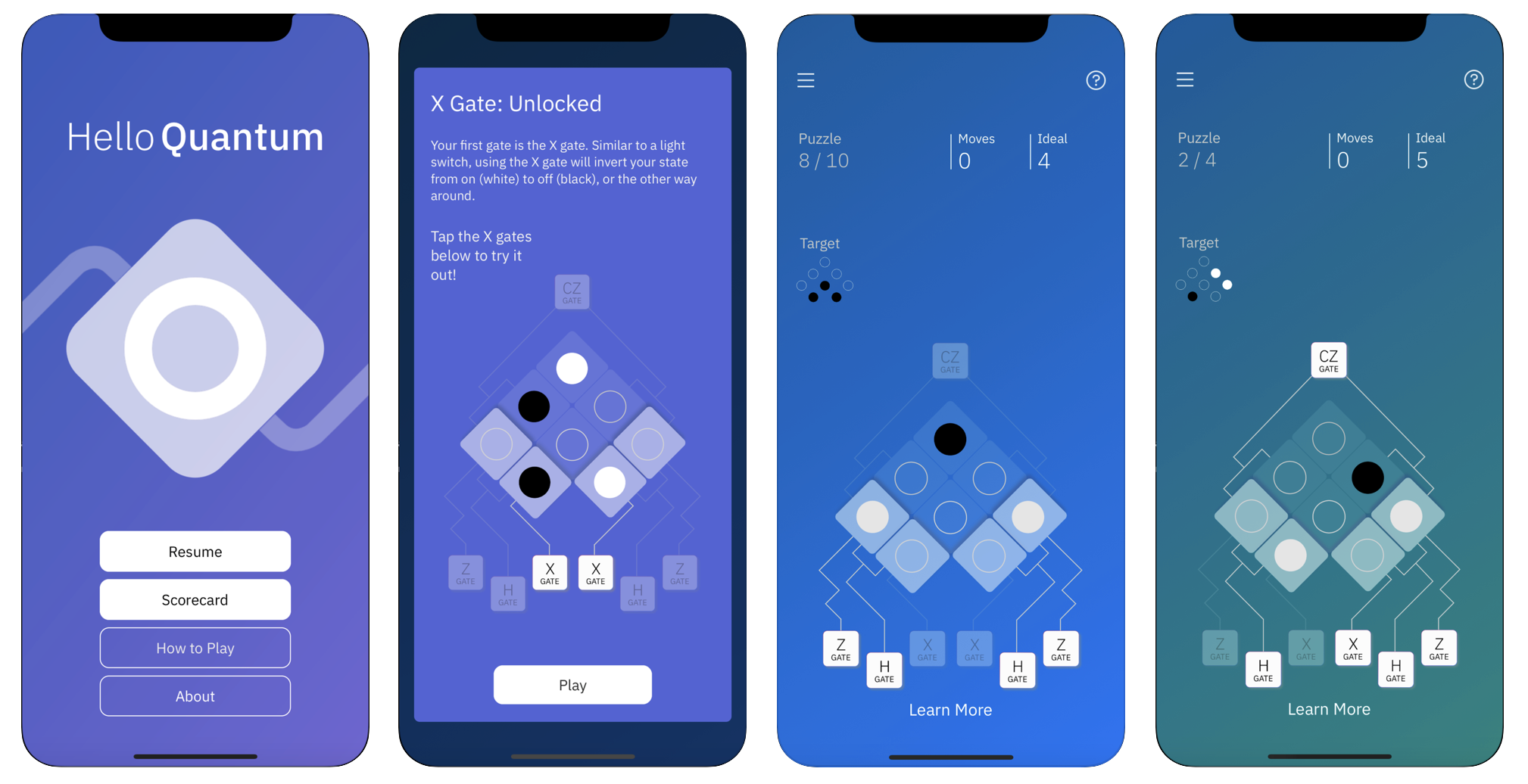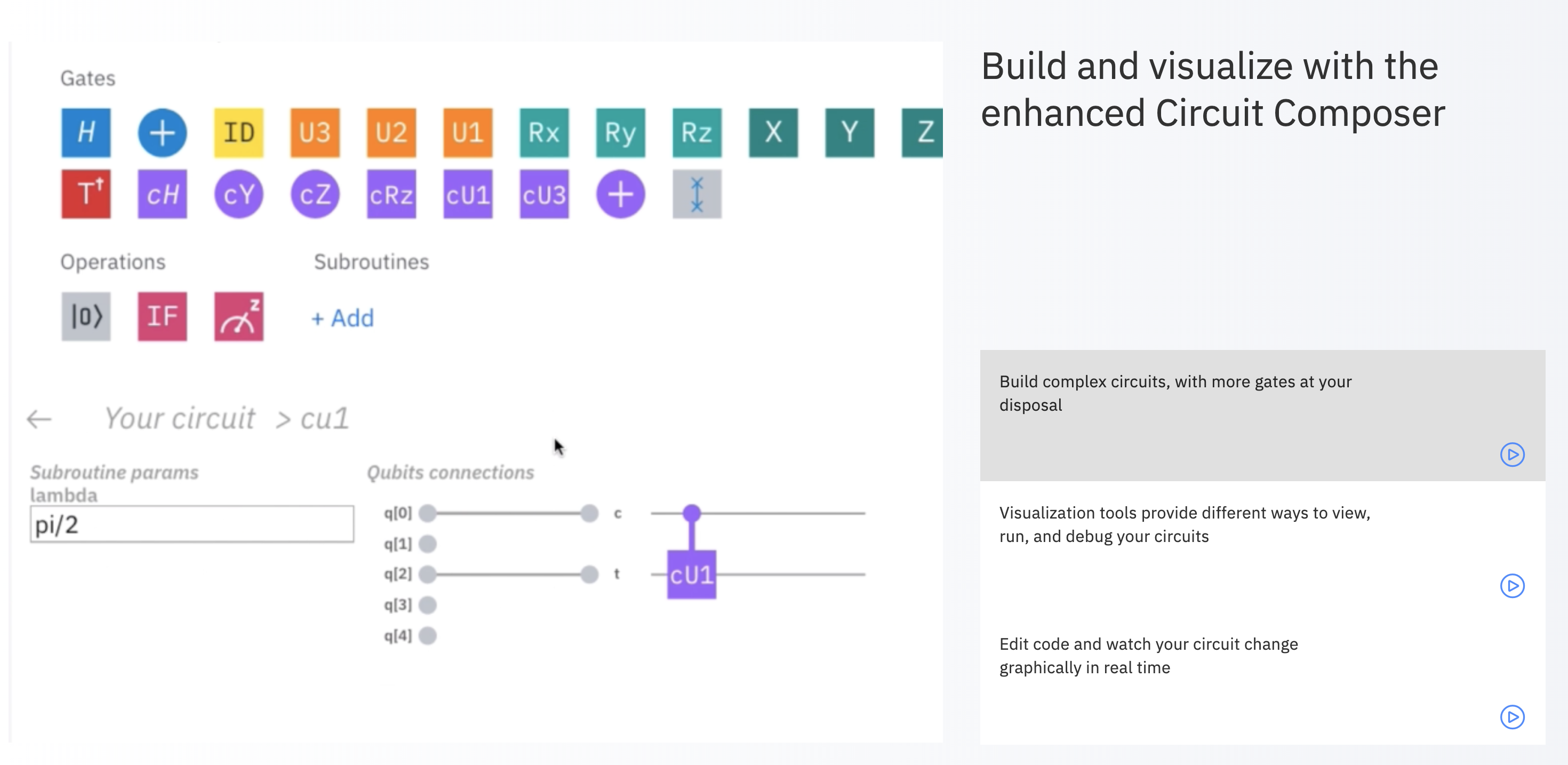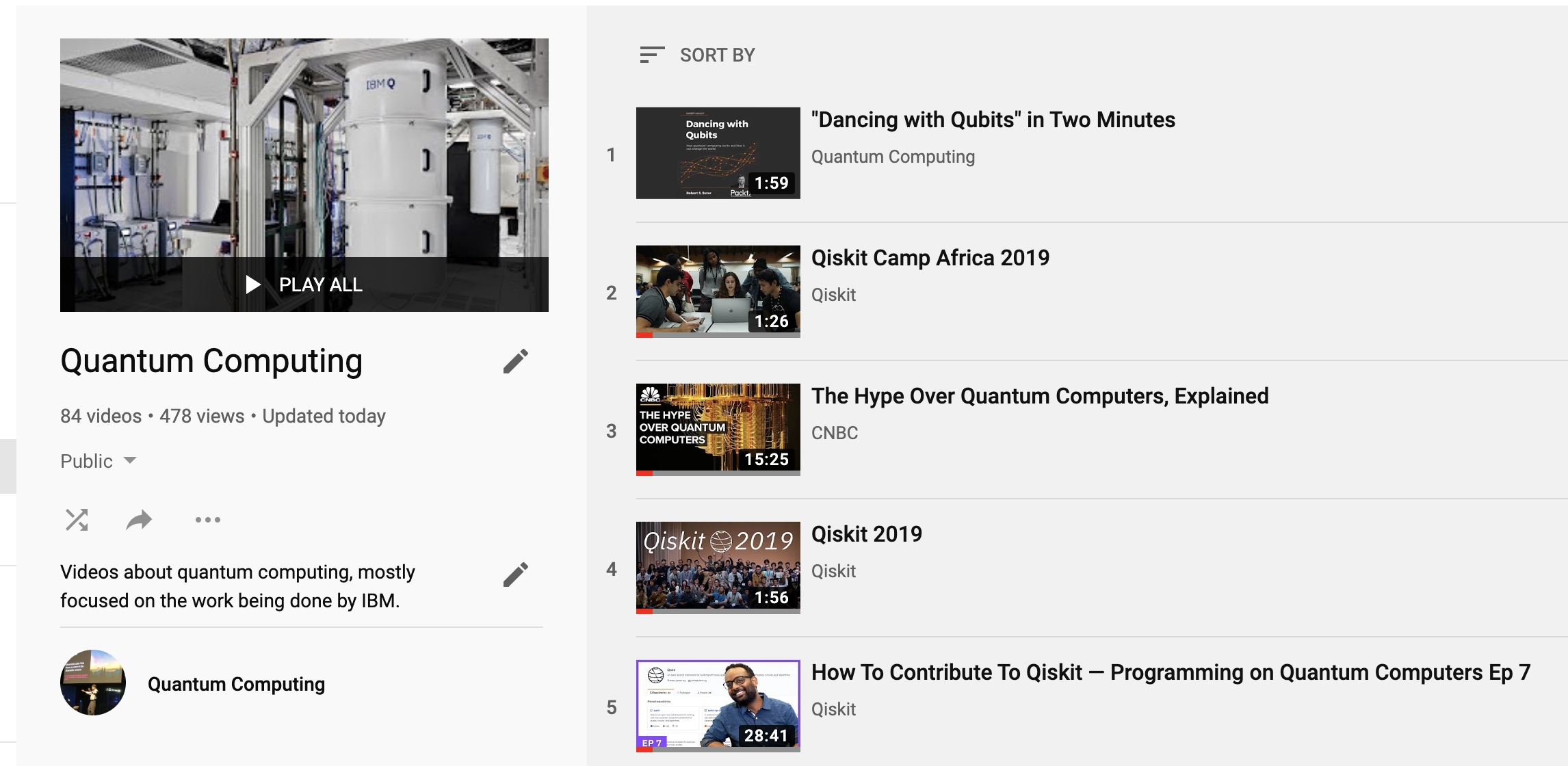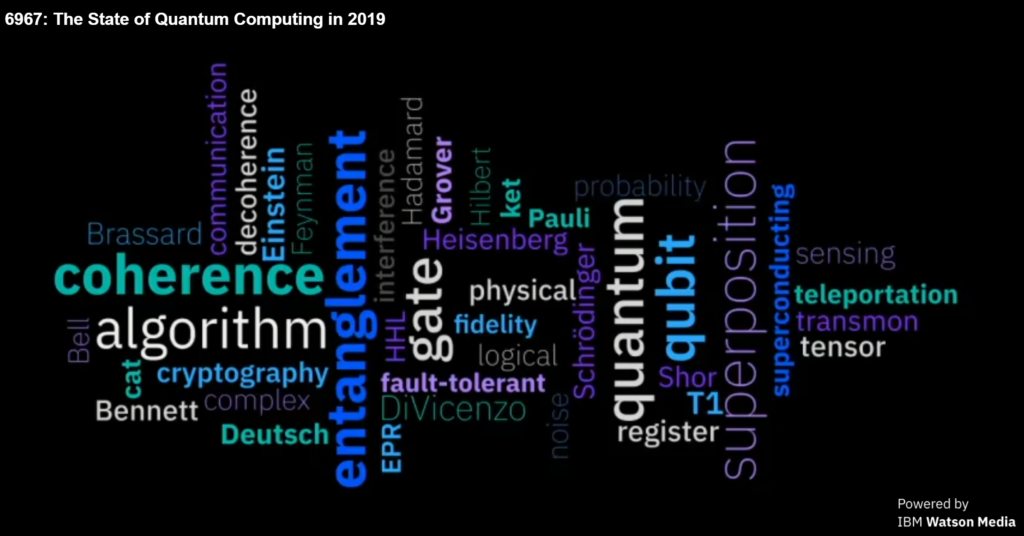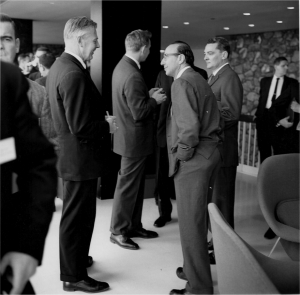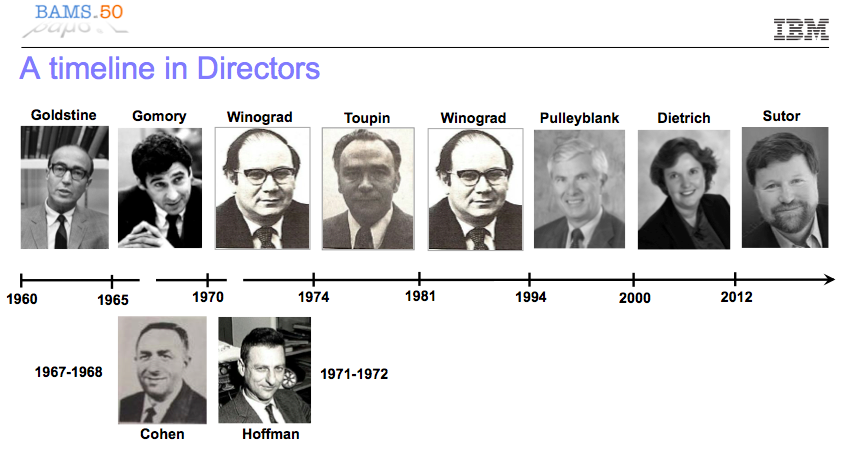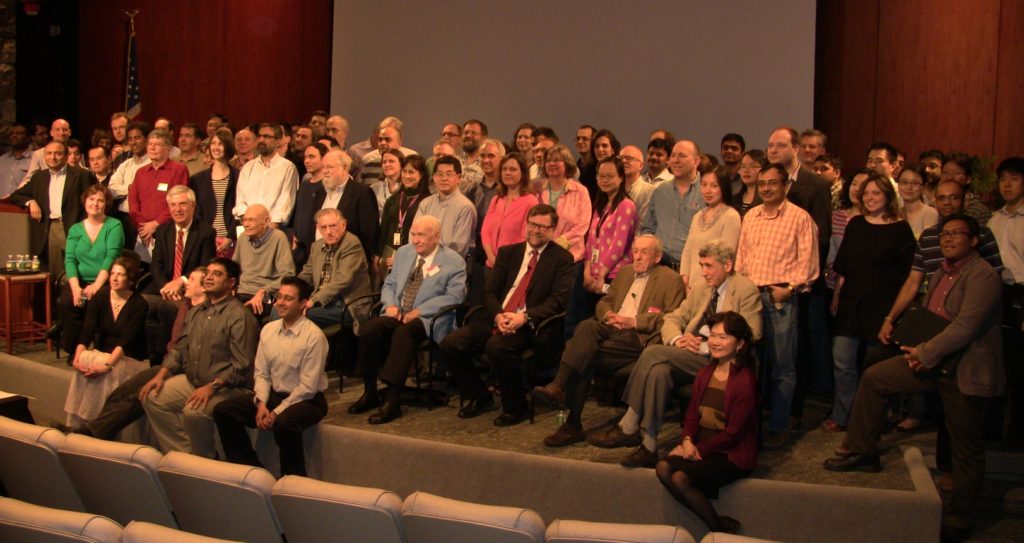Unleash developer productivity with generative AI | McKinsey
(Tuesday, June 27, 2023) “A new McKinsey study shows that software developers can complete tasks up to twice as fast with generative AI. Four actions can help maximize productivity.”
IBM Makes Generative AI Platform for DevOps Available – DevOps.com
(Tuesday, July 02, 2024) “IBM has made available IBM Concert, leveraging generative artificial intelligence and knowledge graphs to surface in real-time dependencies.”
Maintaining human oversight in AI-enhanced software development – Help Net Security
(Wednesday, July 03, 2024) “It’s not that AI-generated code introduces new security gaps; it just means that even more code will make its way through existing gaps.”
Transparency From Behind the Generative AI Curtain – The New Stack
(Friday, July 05, 2024) “The Foundational Model Transparency Index illuminates the black box of data on which large language models are trained.”
Nintendo Says Generative AI Can Be Used in ‘Creative Ways,’ but Highlights IP Issues – IGN
(Friday, July 05, 2024) “Nintendo has commented on the controversial topic of generative AI in video game development, outline the pros and cons as it sees them.”
Enterprises must stop GenAI experiments and start long-term strategies | Computer Weekly
“Steven Webb, chief technology & innovation officer, Capgemini UK argues for enterprise organisations to put aside GenAI experimentation and build long-term strategies with it.”
Gen AI and software development | Deloitte Insights
“Freeplay CEO Ian Cairns describes how the organization has adapted to the paradigm shift that generative AI demands while building AI applications”
Zapata AI and D-Wave Quantum Announce Expanded Partnership for Advanced Generative AI Solutions
“BOSTON and PALO ALTO, Calif., July 8, 2024 — Zapata Computing Holdings Inc., a leader in Industrial Generative AI software solutions, and D-Wave Quantum Inc., a leader in quantum computing […]”
Share this:
New video and podcast page
Since I do a lot of talking for a living, I’ve revamped my Videos and Podcasts page to include many more of the recordings I’ve done with folks over the last several years about quantum computing. Whatever else it is, it’s a gallery of strange frozen expressions on my face in the cover images.
Share this:
From classical FLOPS to quantum CLOPS
This week IBM Quantum introduced a new quantum computing architecture-neutral performance speed metric called CLOPS. CLOPS is short for “Circuit Layer Operations per Second.” For those of you familiar with measuring the speed of high performance classical computers, the acronym is a nod to the metric FLOPS, or “Floating point Operations per Second.”
CLOPS joins Quantum Volume (a measurement of quantum circuit execution quality) and Number of Qubits (an indication of the size of the problem your system can handle) as one of the three essential ways that we can measure progress toward practical Quantum Advantage. Quantum Advantage signifies the point where quantum computers together with classical computing systems can do better than the classical systems alone.
Resources and articles to learn more about CLOPS and quantum computing metrics
The IBM Research Blog: Driving quantum performance: more qubits, higher Quantum Volume, and now a proper measure of speed
The technical white paper on arxiv: Scale, Quality, and Speed: three key attributes to measure the performance of near-term quantum computers
IBM Quantum head Jay Gambetta’s YouTube video: Three Metrics for Quantum Computing Performance: Scale, Quality and Speed
My Inside Quantum Technology conference keynote on November 1, 2021:
- IQT Fall: Sutor, Gasman say quantum needs to focus on what’s practical to achieve what’s possible – Inside Quantum Technology
- Fierce Electronics: IBM proposes new quantum computing speed metric: CLOPS
ZDNet article: Quantum computing: IBM just created this new way to measure the speed of quantum processors
DevClass article: Horses for courses: IBM trots out CLOPS as measure of quantum performance
Share this:
Video of my Q-munity Tech Workshop talk: Quantum Computing – The Next Five Years
My Q-munity Tech Workshop talk from February 25th is now on YouTube. The abstract for the talk was:
There’s a lot of work to be done before quantum computing can reach the scale and performance it must reach to be part of production workloads. In this talk, I’ll describe the IBM Quantum roadmap for the next five years and argue that it is really an industry execution plan for all of us.
Share this:
Tonya Hall and I talk about quantum computing and Dancing with Qubits
It was my pleasure to talk again with Tonya Hall of ZDNet about quantum computing and, in particular, my book Dancing with Qubits. You can watch the video on YouTube:
Share this:
Some practical things you can do to learn about quantum computing
People often ask me “Where should I get started in order to learn about quantum computing?”. Here are several steps you can take. I work for IBM, so things I link to will often be to the IBM Quantum program. Also, I acknowledge that several of the links and videos toward the beginning involve me, but we’ll get through those quickly.
Watch some introductory videos
If you only watch one video, watch this one from WIRED with Talia Gershon:
This one with me is from early 2019 and discussed the IBM Q System One:
Finally, this video from CNBC with Professor Scott Aaronson of the University of Texas Austin, Martin Reynolds of Gartner, and me brings things up to date in January, 2020. Note that I personally do not support many of the statements about “Quantum Supremacy” (horrible label, supercomputers do have massive amounts of storage, off-by-15-million-percent math error):
Get a book
If you are really just getting started and want to systematically work through the required math at an easy and conversational pace, my book Dancing with Qubits should prepare you for more advanced material and give you a start to reading research papers. (Shameless self-plug.)
If you are a hard core physics and/or computer science person, you want to have Quantum Computation and Quantum Information: 10th Anniversary Edition 10th Anniversary ed. Edition by Michael A. Nielsen and Issac L. Chuang in your library. It’s a little old by now, but if you want to end up doing quantum computing research, you will likely have to become very familiar and comfortable with the contents. Other books to consider are Quantum Computing: A Gentle Introduction (good on algorithms, “gentle” is subjective!) and Quantum Computing for Computer Scientists (a bit dated and make sure you get a copy of the errata).
Play a game
Hello Quantum is available for Apple iOS and Android and will teach you the basics of how quantum gates and circuits work.
Build and run circuits with a real quantum computer
Quantum simulators have their place for basic education, experimentation, and debugging. Note, though, that a quantum simulator is to real quantum computer hardware as a TV console flight simulator is to a real plane. If you want a job as a pilot, I would prefer you knew how to fly an actual airplane.
The easiest way to get started without writing code is with the IBM Quantum Composer within the IBM Quantum Experience.
The IBM Quantum Experience has over 200,000 registered users, so you’ll be joining a very large community of beginner, intermediate, and advanced users.
Learn Python
If you are going to write quantum computing code, learn Python. As I write this, the latest version is 3.8. You want Python 3, not Python 2.
Learn Jupyter Notebooks
This is the modern way of developing full documents with interactive code, executions, graphics, videos, and visualizations. It’s used within the IBM Quantum Experience but also many other computational and AI applications. You are mainly interested in how to use it through a browser, not how to run and maintain the console.
Website (introductory): Introduction to Jupyter Notebooks
Write quantum computing code in Qiskit
Qiskit is the leading open source platform for developing quantum computing code and applications. It’s available on Github and available under the Apache 2,0 license. It’s had over 300,000 downloads but I’m recommending you use it through your browser on the IBM Cloud. As with the Composer, it is available through the IBM Quantum Experience.
Whether you want to download Qiskit or use it online, the easiest way to get get started is to watch the series of videos by Abe Asfaw.
From there, you can watch the other videos and also learn about the Qiskit Community.
At this point you are ready to work your way through the online open source Learn Quantum Computing through Qiskit.
Share this:
My YouTube quantum computing playlist
I have a running YouTube playlist about quantum computing where I capture videos mostly about quantum computing in general, IBM Quantum, the Qiskit open source quantum computing development environment, and my book Dancing with Qubits.
Share this:
CNBC video: The Hype Over Quantum Computers, Explained
Along with Professor Scott Aaronson of UT Austin and Martin Reynolds of Gartner, I’m featured in this video from CNBC:
https://youtu.be/u1XXjWr5frE
Share this:
Talk: The state of quantum computing in 2019
Here’s a video of the session that my IBM Q colleague Anthony J. Annunziata and I led at IBM Think in San Francisco a couple of weeks ago.
If I seem slightly breathless, I was. I had about 4 minutes to get from a client meeting in Moscone North to the speaking venue in Moscone South.
Click on the image to go to the video.
Share this:
Talking about quantum computing and the IBM Q System One
Here’s a video I filmed with Fortune about some of the basic principles of quantum computing and the IBM Q System One announcement.
Share this:
Hello again
 After 15 years of blogging and posting at several sites including IBM’s and my own sutor.com, I’ve started a new site and blog to complement the other postings.
After 15 years of blogging and posting at several sites including IBM’s and my own sutor.com, I’ve started a new site and blog to complement the other postings.
I give a lot of talks, write a variety of things, am featured in videos with my colleagues, and work as a tech exec during my day job. I’m going to use this to highlight what I’m up to with the first three of these. For confidentiality reasons I can’t talk much about my primary work until it bubbles out and is ready for public announcement and discussion.
Stay tuned because it’s going to be a busy 2019!
Share this:
Math and Analytics at IBM Research: 50+ Years
Soon after I arrived back in IBM Research last July after 13 years away in the Software Group and Corporate, I was shown a 2003 edition of the IBM Journal of Research and Development that was dedicated to the Mathematical Sciences group at 40. From that, I and others assumed that this year, 2013, was the 50th anniversary of the department.
I set about lining up volunteers to organize the anniversary events for the year and sent an email to our 300 worldwide members of what is now called the Business Analytics and Mathematical Sciences strategy area. Not long afterwards, I received a note from Alan Hoffman, a former director of the department, saying that he was pretty sure that the department had been around since 1958 or 59. So our 50th Anniversary became the 50+ Anniversary. Evidently mathematicians know the theory of arithmetic but don’t always practice it correctly
The first director of the department was Herman Goldstine who joined after working on the ENIAC computer and a stint at the Institute for Advanced Study in Princeton. Goldstine is pictured in the first photo on the right at a reception at the T.J. Watson Research Center in the early 1960s. Goldstine died in 2004, but all other directors of the department are still alive.
We decided that the first event of the year celebrating the (more than) half century of the department would be a reunion of the directors for a morning of panel discussions. This took place this last Wednesday, May 1, 2013.
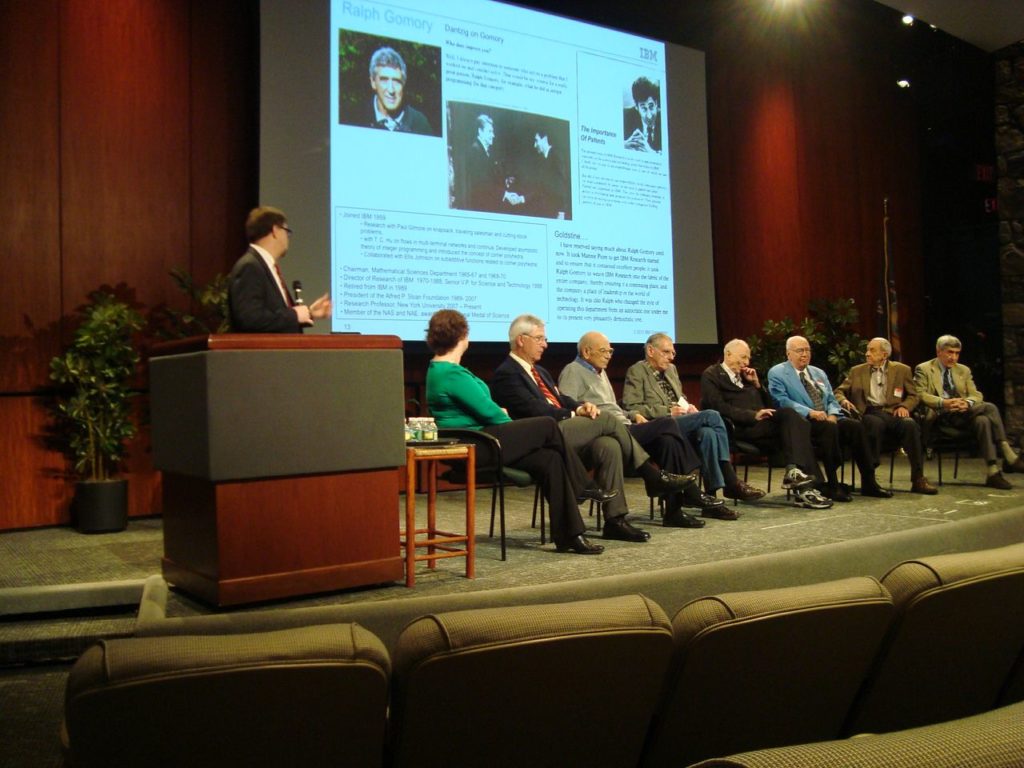
I started the day by giving a glimpse of what the department looks like today: the above-mentioned 300 Ph.D.s, software engineers, postdocs, and other staff distributed over the areas of optimization, analytics, visual analytics, and social business in 10 of IBM’s 12 global labs.
I then introduced our panel pictured in the photo above. From left to right we have me, Brenda Dietrich, 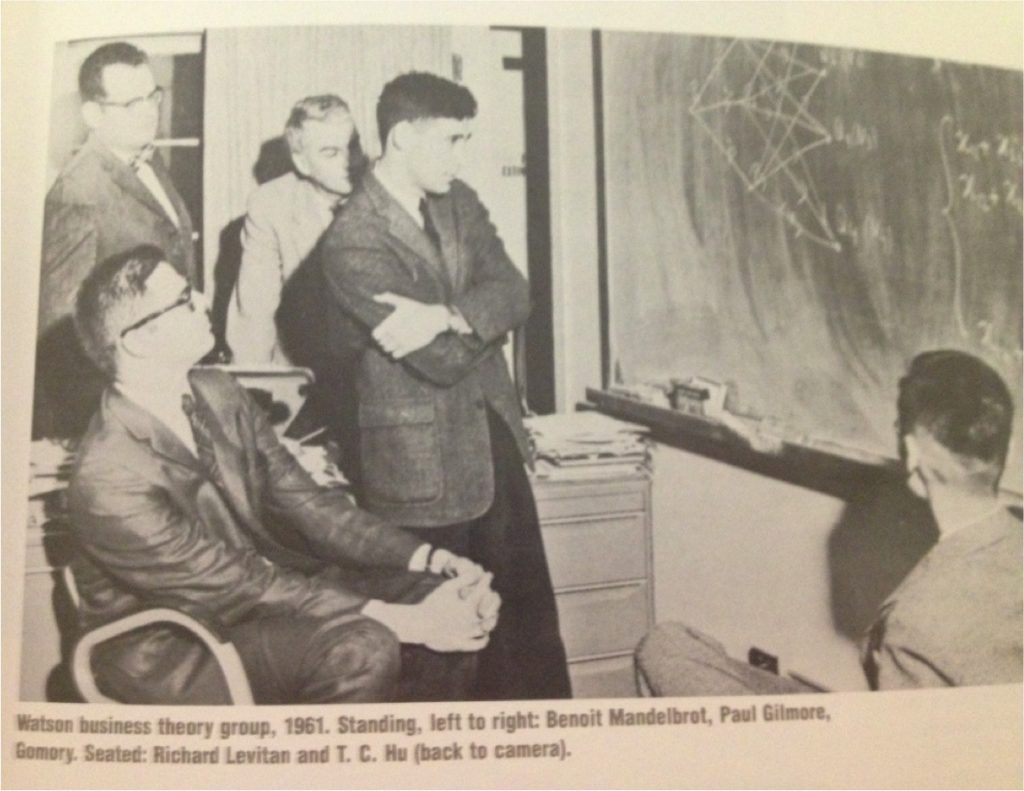
My goal for the discussion was to go back and look at some of the history and culture of the math department over the last five decades. I was hoping we would hear anecdotes and stories of what life was like, the challenges they faced, and the major successes and disappointments.
Other than a few questions I had prepared, I wasn’t sure where our conversation would go. The many researchers who joined us in the auditorium at the T. J. Watson Research Center in Yorktown Heights, NY, or via the video feed going out to the other worldwide labs would have a chance to ask questions near the end of the morning.
I’m not going to go over every question and answer but rather give you the gist of what we spoke about.
- Ralph Gomory reminded us that the department was started in a much different time, during the Cold War. The problems they were trying to solve using the hardware and the software of the day were often related highly confidential. However, every era of the department has had its own focus, burning problems to be solved, and operational environment.
- Hirsh Cohen got his inspiration for the mathematics he did by solving practical problems such as those related to the large mainframe-connected printers. Many people feel that mathematics shouldn’t stray too far from the concrete, but it is not that simple. This isn’t just applied mathematics, it is a way of looking for inspiration that may express itself in more theoretical ways. The panelists mentioned more than once that the original posers of business or engineering problems might not recognize the mathematics that was developed in response. (I think there is nothing wrong with theoretical mathematics with no direct connection to the physical world, but there are some areas of mathematical pursuit that I think are just silly and of marginal pure or applied interest.)
- In response to my question about balancing business needs with the desire to advance basic science, Shmuel Winograd told me I had asked the wrong question: it was about the integration of business with basic science, not a partitioning of time or resources between them. This very much sets the tone of how you manage such a science organization in a commercial company. The successful integration of these concerns may also be why IBM Research is pretty much the sole survivor of the industrial research labs from the 1950s and 1960s.
- There was general consensus that it is difficult to get a researcher to do science in an area that he or she fundamentally does not want to work. This was redirected to the audience members who were reminded to understand what they loved to do and then find a way to do it. (This sounded like a bit of a management challenge to me, and I suspect I’ll hear about it again.)
- Time gives a great perspective on the quality and significance of scientific work that is just not obvious while you are the middle of it. This is one of the reasons why retrospectives such as this can be so satisfying.
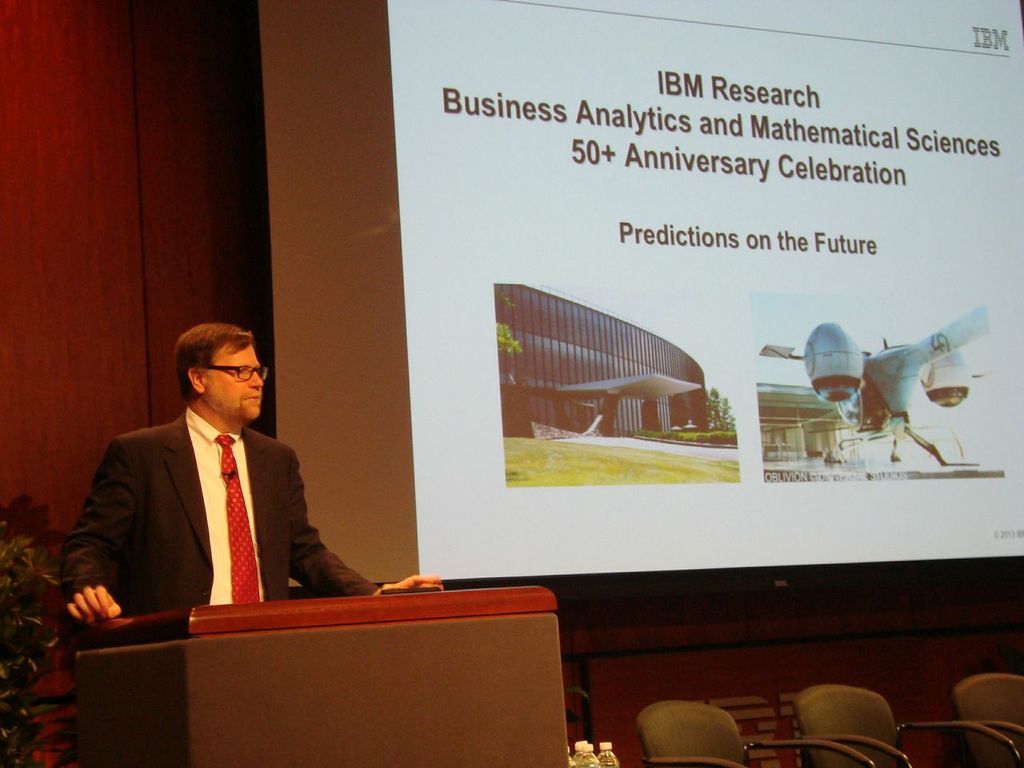
After the first panel and coffee break, we came back and I started the session looking at the future of the department instead of the history. We have an internal department social network community in IBM Connections and I started by summarizing some of the suggestions people came up with about what we’ll be doing in the department in five, ten, and twenty years.
Sustainability, robotic applications of cognitive computing, and mathematical algorithms for quantum computing were all suggested. Note that his was all fun speculation, not strategy development!
Eleni Pratsini, Director of Optimization Research, and Chid Apte, Director of Analytics Research, then each discussed technical topics that could be future areas for scientific research as well as having significant business use.
After the final Q&A session, we got everyone on stage for a group photo.
One thing that struck me when we were doing the research through the archives was how much more of a record we have of the first decade of the department than we do of the 40+ years afterwards. In those early days, each department did a typed report of its activities which was then sent to management and archived.
With the increasing use of email and, much later, digital photos, we just don’t have easy if any access to what happened month by month. As part of this 50+ Anniversary, I’m going to organize an effort to do a better job of finding and cataloging the documents, photos, and video of the department.
This should make it easier for future celebrations of the department’s history. I suspect I’m not going to make it to the 100th anniversary, but I just might get to the 75th. For the record for those who come after me, that will be in 2034.
